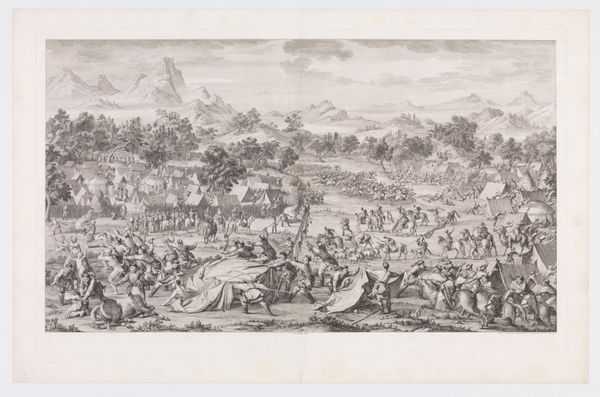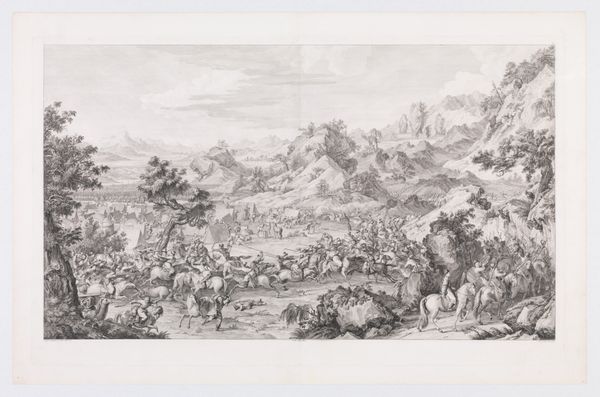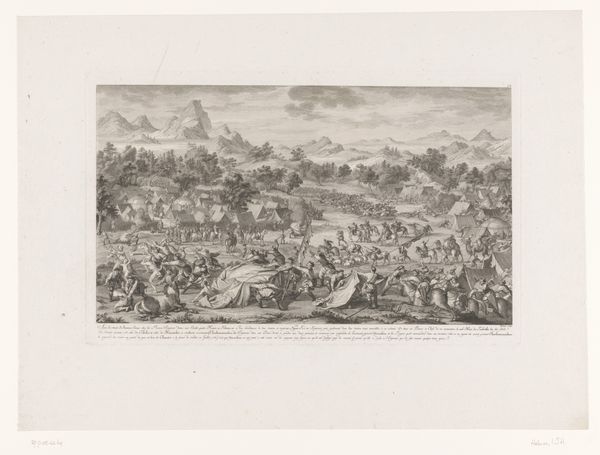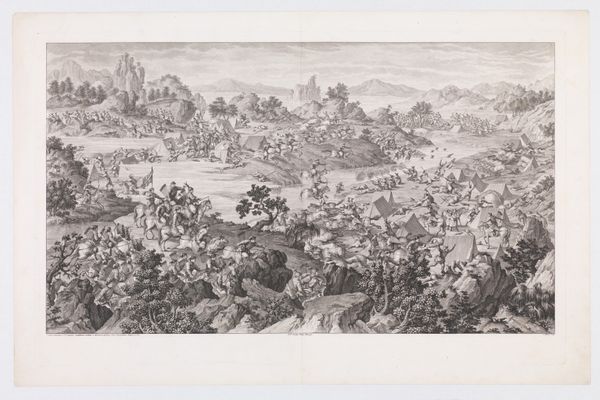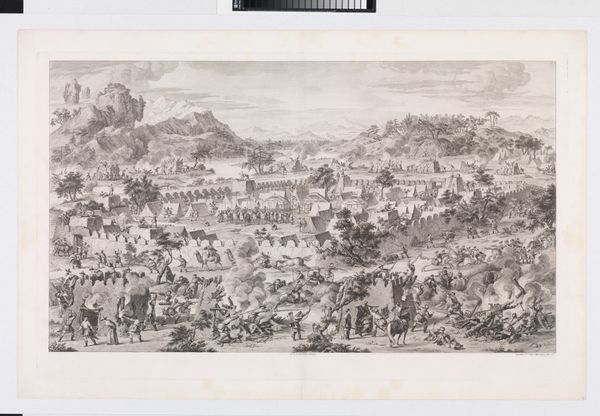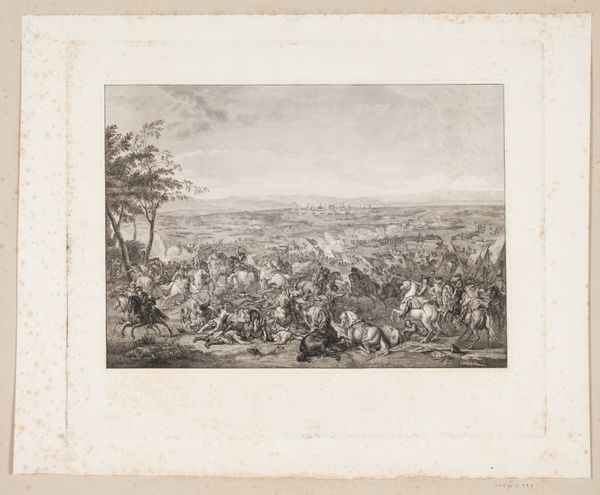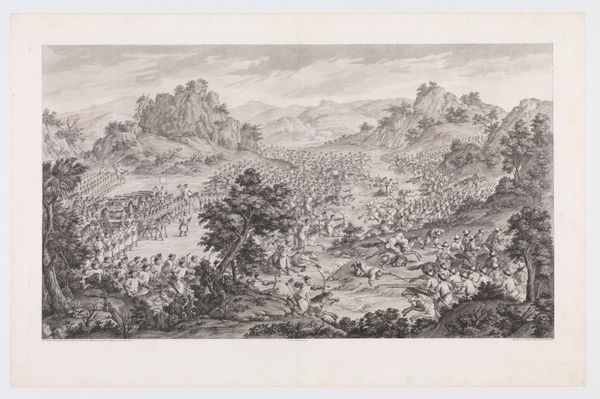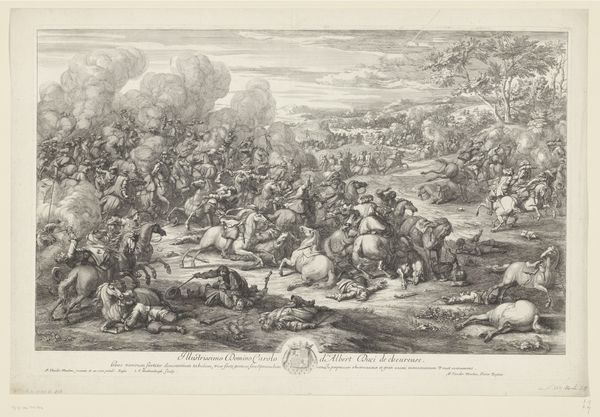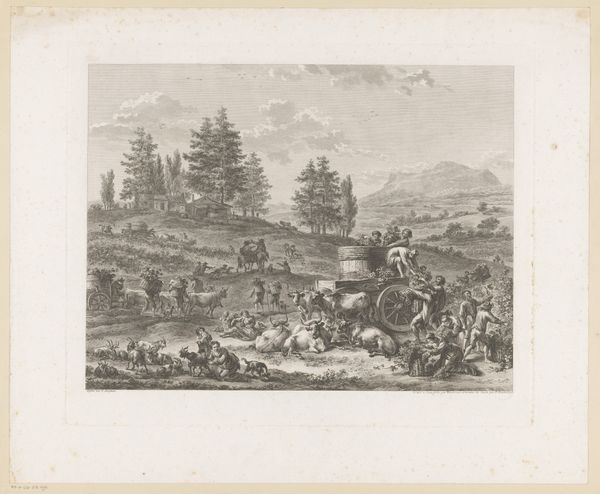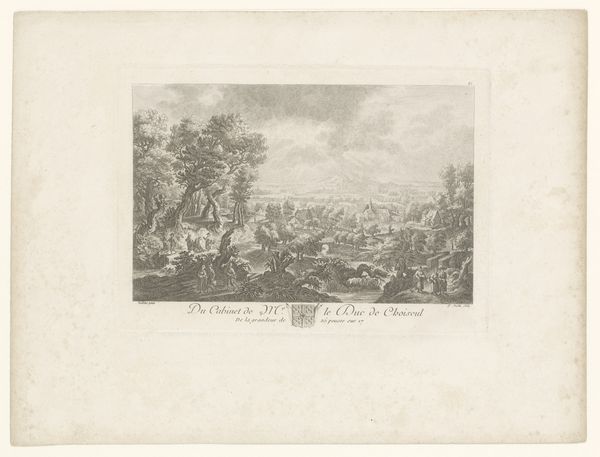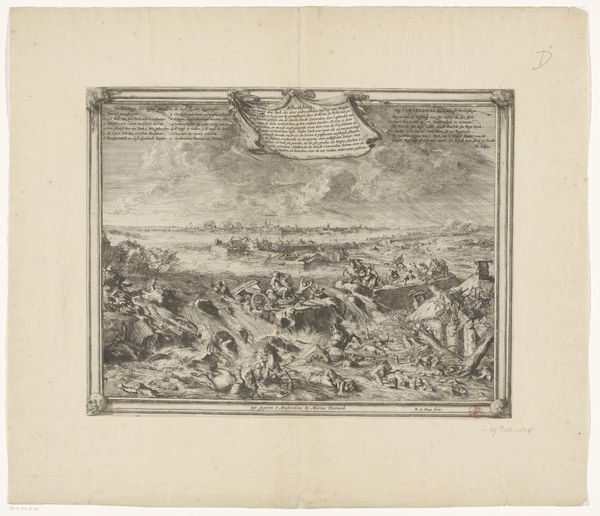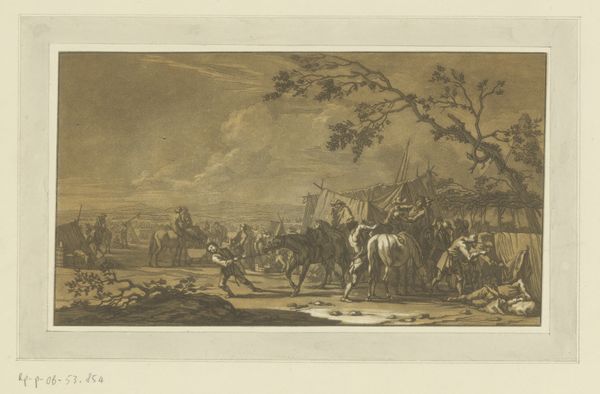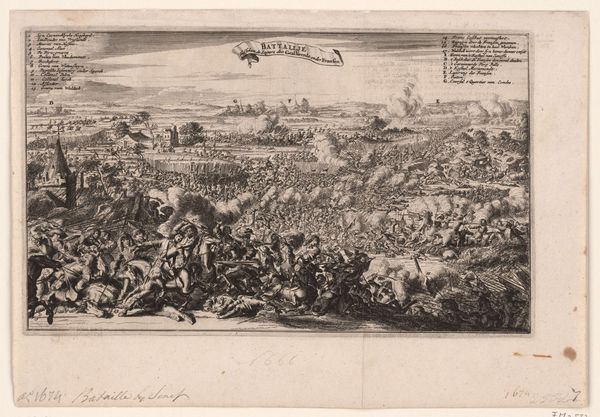
Dimensions: Sheet: 39 5/8 × 25 3/4 in. (100.7 × 65.4 cm) Plate: 36 3/4 × 22 3/8 in. (93.3 × 56.8 cm)
Copyright: Public Domain
Curator: This etching, "The Victory of Khorgos", was produced in 1774, by Jacques Philippe Le Bas, after a design by the French artist Jean-Denis Attiret. It's currently part of the collection at the Metropolitan Museum of Art. Editor: Whoa. I'm immediately struck by the density. Look at this churning mass of… everything. People, horses, trees—it's a very busy landscape, a maelstrom! Curator: It absolutely is, but this piece is much more than just chaos. "The Victory of Khorgos" depicts a pivotal moment from the Qianlong Emperor's military campaigns. What we're seeing here is, ostensibly, a glorified record of imperial power, meticulously rendered through a very European lens, filtered through layers of artistry and printmaking. Editor: Layers is right. The level of detail Le Bas managed to achieve through engraving is astounding. Just look at the harnesses on the horses, the individual blades of grass—it feels like an obsessive cataloguing of reality, almost bureaucratic. What sort of tools do you imagine Le Bas might've used? The line-work is insane! Curator: The use of very fine burins would certainly be crucial to create such intricate details. As for how Attiret and his associates experienced and conceived the campaign depicted here? I imagine very different types of materials coming into play. A brush, ink, silk? There must be very subtle differences to unpack by following the path of image making... It also asks what is lost, or gained in translation as we work across languages, and artistic approaches. It speaks of our assumptions around originality. Editor: Well, regardless of the original media the image clearly becomes transformed when moved to the world of mass reproducible printing. Its initial function might have been tied to solidifying imperial power, yet this piece finds its way into all sorts of books and travelling collections. Curator: Precisely! And those books eventually make their way across the globe! It speaks of material endurance. I now perceive “Victory” in an entirely different register. It strikes me as fascinating that this rather grand victory scene became available on demand, like something manufactured! It speaks volumes about value too. Editor: Definitely, plus the act of copying and disseminating creates new interpretive pathways for everyone. These historical events enter our visual vocabulary so effortlessly that the meaning can shift once we start questioning the artwork's materials. Curator: An empire through ink, distributed and considered. Very telling, indeed.
Comments
No comments
Be the first to comment and join the conversation on the ultimate creative platform.
